The Samnites were an ancient civilization, mostly located in southern Italy. While first at war with the Romans, they eventually became Rome’s allies as they were integrated as a part of the wider Roman identity. However, the Samnite people potentially influenced the Romans more than the other way around. After they defeated the Samnites, the Romans adopted many of their military and cultural customs.
Table of Contents
Who Were the Samnites?
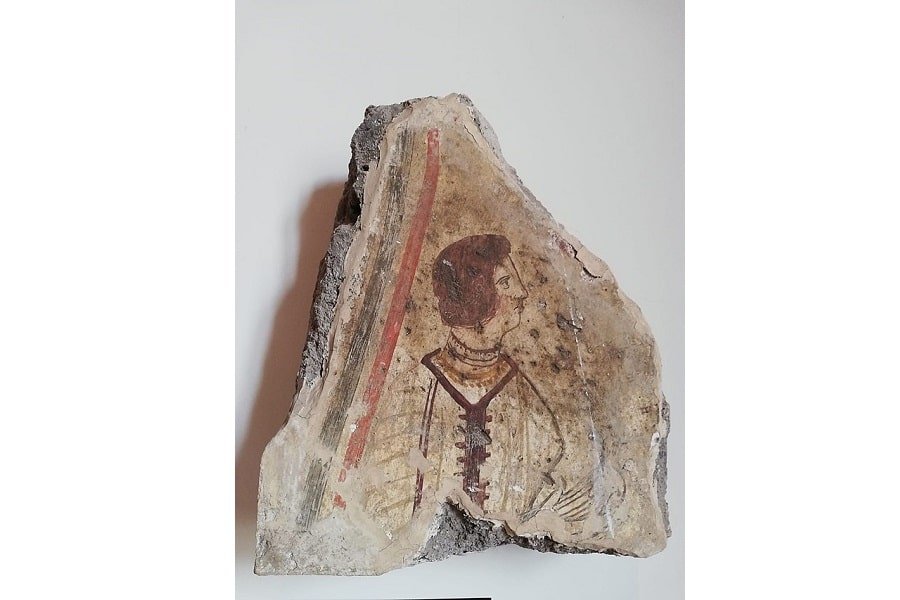
The Samnites take a notable place as one of the prominent peoples of Italic origin. From their humble beginnings as a confederation of tribes in the central Apennine Mountains of Italy, the Samnites would rise to become a power to be reckoned with. They challenged the Roman Empire tremendously in the third century BC, leaving a lasting impact on the history of Italy.
The origins of the Samnites can be traced back to the early Iron Age, around the eighth century BC. They emerged as a loose confederation of tribes inhabiting the mountainous terrain of central Italy, specifically in the modern regions Abruzzo, Molise, and Campania.
Since they lived in the mountains of central and southern Italy for such a long time, they knew all too well how to navigate them. The Samnites really had great knowledge about their environment, which, also, was at the foundation of their way of life; resilience, the ability to stay independent, and military prowess altogether.
The ancient civilization of the Samnites was not an empire. They were simply a confederation of tribes without a real centralized political entity. However, they were obliged to fight in unity against the threats from outside.
While they did make some territorial gains over time, these were minimal and it is questionable whether the Samnites actually wanted to expand the lands they could roam – instead of simply inhibiting Rome’s expansion.
Meeting the Romans
At first, the Samnites were somewhat detached from the people around them: they lived among the mountains circumscribed by the lowlands of Campania. They were living with the people in the different Samnite communities, protected by an excellent natural boundary that was the mountains.
However, this all changed when Roman power grew. At the time, Rome wasn’t very busy with its expansion yet. The Samnite wars in some way started the eventual rise of Roma and the Roman conquest of basically all of Europe and Northern Africa.
The first major confrontation between the two militaries occurred in the late fourth century BC. This clash, now known as the First Samnite War (343-341 BC), set the stage for a series of conflicts that would span over several decades.
As indicated before, the Samnites were literally just a confederation of several tribal groups in the ancient region of central Italy. However, in order to deal with the Roman forces, they united under their military federation known as the ‘Samnite League’.

Second Samnite War
Despite initial successes, the Samnites eventually succumbed to Roman imperialism. This happened in the Second Samnite War (327-304 BC). Although the Samnite Confederation demonstrated its remarkable military abilities, Rome simply had more resources and better organizational capabilities.
Because of this tactical advantage, the Romans ended up victorious. However, the Samnites weren’t defeated. They continued to protect at least part of the mountains that they inhabited, albeit a significantly smaller part than before. Unfortunately, the exact estimations about how much territory the Samnites lost aren’t available in the modern day and age.
Third Samnite War
The Samnites continued to resist Roman dominance. However, the Third Samnite War (298-290 BC) ended up being the last in the line of all Samnite wars. The Samnites forged alliances with other Italic peoples and even secured military assistance from Pyrrhus – the renowned Greek king of Epirus. Still, despite their brave efforts, the Samnites could not withstand Rome’s relentless pressure.
The war ended in a crushing defeat and decisive Roman victory, further expanding Rome’s control over the Italian peninsula. The fall of the Samnites as an independent political entity did not mark the end of their significance, however.
READ MORE: Roman Wars
The fall of the Samnites rather signaled a transformation in their relationship with Rome. After all, the Romans didn’t kill everyone, and the ones that were left were quickly granted Roman citizenship.
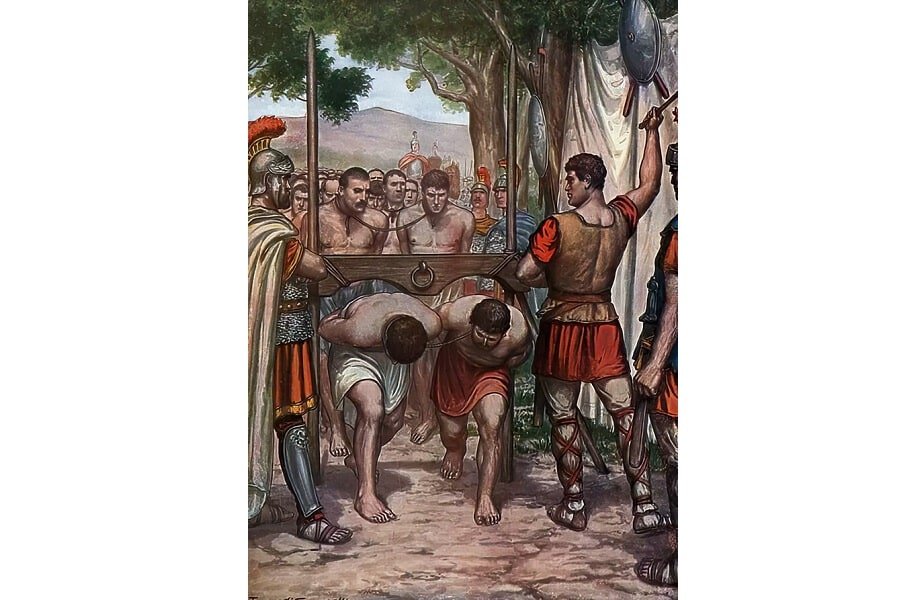
Influence of the Samnites on the Roman Society
And, it didn’t stop with citizenship. The Romans recognized the military virtue and tenacity of the Samnites, so they incorporated many of their soldiers into the Roman legions.
Other than just integrating soldiers, whole war tactics were actually adopted after the defeat of the Samnites. Roman historians noted that the use of the ‘maniple’ formation – a flexible unit consisting of 120 soldiers – had a lasting impact on the Roman military organization.
The Roman army adopted this tactical formation, which allowed for greater flexibility and adaptability on the battlefield. Amongst others, the maniple system significantly contributed to the military successes of the Roman Empire. But also simply battling with the Samnites was valuable for the Romans.
The fierce opponents challenged the Romans so much that they had to refine their military strategies and tactics. So all and all, the Samnite wars provided a significant test for the Roman Republic and played a crucial role in shaping Rome’s military and political development.
Cultural Influence on the Romans
Not only on a military note did the Samnites influence the Roman Empire. Also, the distinctive cultural and war traditions contributed to shaping Roman society, even after their subjugation.
Specifically, the cultural legacy of the Samnites continued to be relevant in the territory known as pre-Roman Samnium; the ancestral homeland. Despite the process of Romanization, Samnite cultural traditions continued to live and coexist with Roman influences.
Their religious practices, social customs, and artistic expressions continued to shape the local identity of the region.
Law and Legislation
But that’s not all. They even left a mark on the Roman legal system. Their legal customs and practices were rooted in a sense of communal self-governance.
The Roman legal concept of ius civile Samnitium (Samnite civil law) reflected the recognition and incorporation of Samnite legal principles into the broader Roman legal framework.
Still, it’s hard to come to a comprehensive understanding of what this Samnite civil law consisted of. It is possible that it incorporated elements of both communal and private law, but there are simply too few sources to give a decisive answer to this.
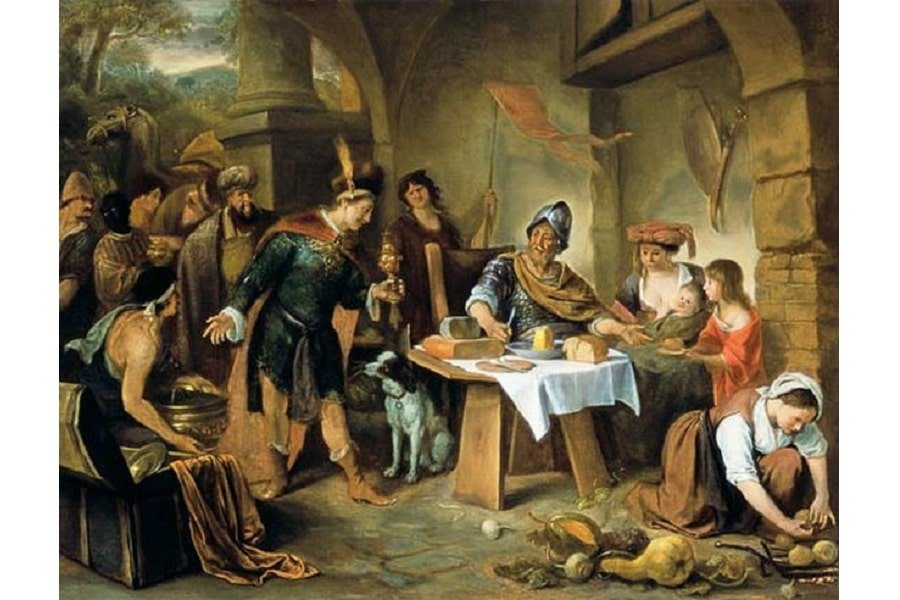
An Ethnic Cleansing Campaign
It is worth noting that a black chapter exists in Roman-Samnite history. After the initial conquest, the ancient Italic peoples of the Samnites were able to continue practicing their traditions and customs. However, there was a point when the Roman senate and Roman consuls decided to engage in something that is often seen as an ethnic cleansing campaign.
Lucius Cornelius Sulla, a Roman dictator who was in power during the late Roman Republic, implemented a wide range of policies and actions to consolidate his power and suppress his opponents.
READ MORE: Roman Emperors in Order: The Complete List from Caesar to the Fall of Rome
As part of these measures, he declared certain individuals as enemies of the state and subjected them to prison, exile, or death. While it had a lasting impact on Samnite culture, it is important to note that these measures were primarily aimed at political opponents and individuals threatening the authority of Sulla anywhere in Italy.
So, the motive behind Sulla’s actions was more political than ethnically driven. His actions caused widespread suffering and loss of lives, but in no way the Roman dictator focused his ethnic cleansing campaign exclusively on the Salemnites.
What Did Samnites Do?
The Samnite men and women were known for their impressive resistance against the Roman Republic. However, there were many more things central to Samnite society. Although they spoke a quite distinct Oscan language, they engaged in ample political alliances with neighboring (Roman) tribes, had their own agricultural economy, and engaged in elaborate trade networks with Greek and Etruscan cities.
The Samnite League and Political Alliances
The Samnites formed alliances and federations with neighboring peoples to enhance their political strength and defend their territories. The Samnite League, as mentioned before, was the most prominent of these alliances. The federation allowed the Samnites to consolidate their military forces and coordinate their efforts toward resisting external threats.
Really, if there was no such thing as the Samnite League, it is questionable if we could ever talk about the Samnites as an actual entity. It would’ve rather been all separate chiefdoms with their own names and customs.
The League consisted of several Samnite tribes, including the Pentri, Hirpini, Caraceni, Caudini, and others. These tribes, while maintaining their individual identities and internal governance, came together under the banner of the League to coordinate their military efforts and political strategies against the Romans.
The League provided a mechanism for collective decision-making, military cooperation, and diplomatic efforts. It enabled the Samnites to manage their resources, coordinate military campaigns, and negotiate alliances with other Italian peoples who opposed Roman dominance.
While the Samnite League ultimately failed to prevent Roman dominance, it played a crucial role in shaping the course of Italian history. The League demonstrated the capacity of the Samnite tribes to unite and resist foreign invasions.
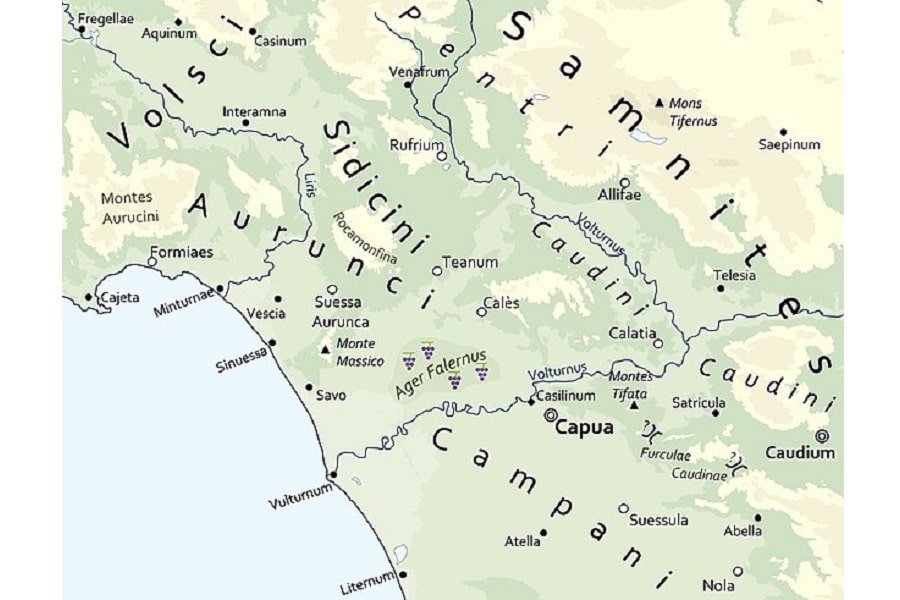
Cultural Interactions of the Samnites
The Samnites had significant cultural interactions with other Italic and non-Italic peoples in the region. They had contact with the Etruscans, Greeks, and Romans, which influenced their material culture, language, and religious practices.
Greek influences can be seen in Samnite pottery and art, suggesting artistic exchanges and inspirations. The Samnites also adopted Greek gods and goddesses and religious practices, although with their own distinct interpretations.
Roman influences became more prominent over time as the Romans expanded their control over Samnite lands. The Samnites also adopted aspects of Roman army tactics and administrative systems, which influenced their own military organization and governance.
Historical records and archaeological evidence also suggest that the Etruscans and Samnites had interactions, both peaceful and hostile. After all, Southern Etruria bordered the North of Samnite territory. Because of it, they engaged in trade, cultural exchange, and occasional conflicts.
Economic Activities and Food
Agriculture formed the backbone of Samnite society. The Samnites were primarily agrarian people, sowing and harvesting crops while taking care of their domesticated animals.
The fertile lands of Samnite territories allowed for productive agriculture and ensured the availability of food resources. They cultivated a variety of crops such as grains, olives, and grapes, which sustained their communities and provided trade commodities.
Fruits, legumes, grains, and vegetables were the main foods in Samnite settlements, supplied with meat and animal products from their domesticated cows, goats, and pigs. For most of their existence, the Samnite region was landlocked. However, the rivers that ran through it yielded an abundance of fish.
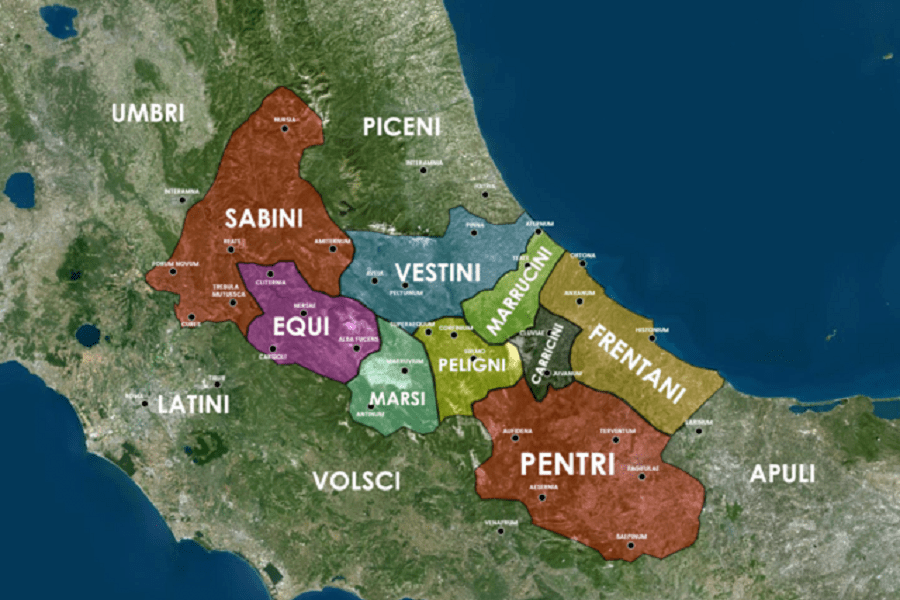
Other Economic Activities
In addition to agriculture, the Samnites engaged in other economic activities such as mining. Samnite territories were rich in natural resources, including iron ore, which facilitated skilled ironworking and the production of weapons and tools.
Trade and exchange of goods were also essential, allowing the Samnites to acquire goods and materials from neighboring regions. Other than agricultural products and livestock, the Samnites traded artistic products and searched for exotic products and valuable materials from other continents, such as gemstones.
Social Organization of the Samnites
Samnite society was organized around clans and tribes. Each tribe had its own leader or chieftain, and decisions were often made collectively within tribal assemblies. Since there was a chief, the social structure was technically hierarchical.
Prominent families held positions of power and influence within the community, but their decisions were made strictly in conversation with other members of the community. Military achievements played a crucial role in their social and political status. Samnite warriors were highly respected, and their valor in battle earned them prestige within the community.
Also, the society placed great importance on their traditions and maintenance of a warrior culture, which influenced their identity and social dynamics.
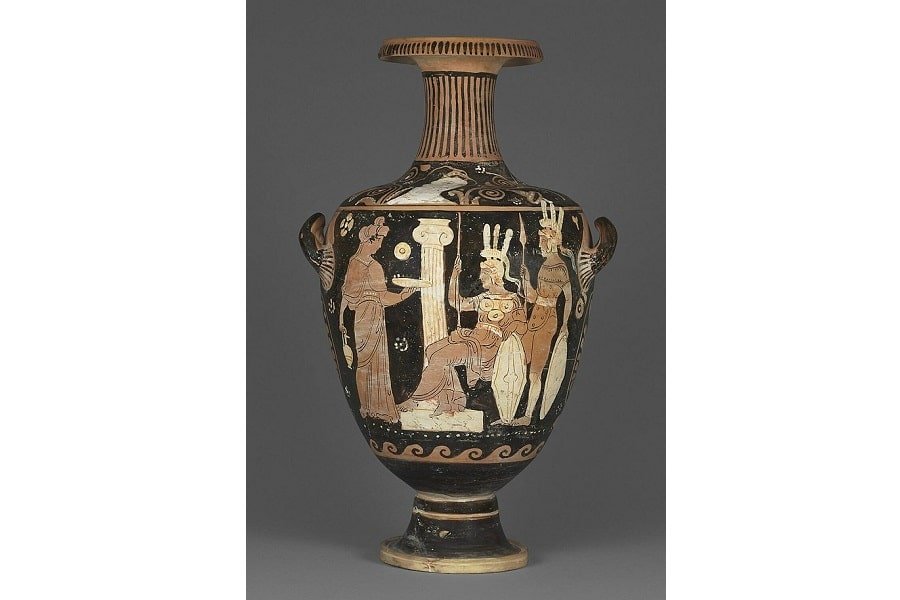
Gender Roles and War
In Samnite society, like in many ancient cultures, gender roles played a significant role in shaping social dynamics and expectations. While there are certainly gaps in Samnite history, a lot can be uncovered based on the archaeological record and comparative studies with neighboring cultures.
Samnite men held prominent positions and were primarily responsible for defending their community by participating in warfare and engaging in political affairs. They were expected to display their martial skills and bravery on the battlefield. This is most evident in the presence of weapons and armor in the graves of males.
Additionally, men likely held positions of authority and leadership within their tribes and communities. They participated in decision-making processes, represented their communities in diplomatic matters, and played a significant role in the governance and administration of Samnite society.
The Role of Women
The role of Samnite women is less documented, but it is believed that they primarily occupied domestic and familial spheres; as per usual at that time in Europe. They played essential roles in managing households, raising children, and maintaining social cohesion within the community.
The archaeological evidence shows that women were buried with domestic goods such as spindles or jewelry, which also indicates their involvement in activities associated with homemaking, textile production, and personal adornment.
However, it is worth noting that there were weapons present in both male and female graves at Samnite sanctuaries. In some instances, women were buried with objects that could have warrior-like connotations, suggesting that they may have had a degree of involvement in defense or symbolic roles related to warfare.
Other than that, some young adult women were buried with items that are traditionally associated with boys, further suggesting that their roles and activities were not limited solely to domestic responsibilities.
So, there are definitely some interesting things to say about the role of men and women in the ancient society of the Samnites. Still, we should be cautious with assuming things about societies we know relatively little about.
Who are the Gods of the Samnites?
The Samnites had their own pantheon of gods and goddesses. While detailed information about their specific deities is limited, we can say a fair bit about the gods of the Samnites because they were heavily influenced by Roman and Greek mythology. Some gods that the Samnites worshiped include Soranus, Hercules, Feronia, Jove, Aesernia, Ceres, Mars, Angitia, Apollo, and Diana.

READ MORE: Roman Gods and Goddesses: The Names and Stories of 29 Ancient Roman Gods
The sources for understanding the gods worshiped by the Samnite people primarily come from archaeological discoveries, inscriptions, and references found in the writings of ancient writers from Rome and Greece.
Soranus
Soranus was one of the primary deities worshiped by the Samnites. He was considered the chief god and the divine protector of the Samnite people. Soranus was associated with fertility, agriculture, and the growth of crops. He played a significant role in ensuring the prosperity and well-being of the Samnites and their land.
The worship of Soranus likely involved rituals, ceremonies, and offerings conducted by priests or priestesses – who served as intermediaries between the Samnite people and the divine realm.
The specific details of these religious practices are not well-documented, but it can be inferred that they would have included prayers, sacrifices, and festivities tied to the cycles of the agricultural year.
Hercules

The Samnites also worshiped Hercules, the Roman name for the Greek hero Heracles. Hercules was a popular deity among the ancient Italic peoples, including the Samnites.
The god was associated with strength and courage, and the Samnites regarded Hercules as a protector and patron of their warriors, and they often sought his favor before going into battle.
Feronia
Feronia was one of the most important goddesses, associated with fertility, agriculture, and the protection of forests and wildlife. Feronia represented the bountiful aspects of nature and was particularly revered by farmers and those who relied on the land for sustenance.
In addition to her association with fertility and agriculture, Feronia was also revered as a protector of the natural world. She was believed to safeguard the wild places, forests, and wilderness, and her presence was thought to bring harmony and balance to the environment.
Feronia’s role as a guardian of nature would have resonated strongly with the Samnites, who lived in close connection with their beloved mountains.
Jove
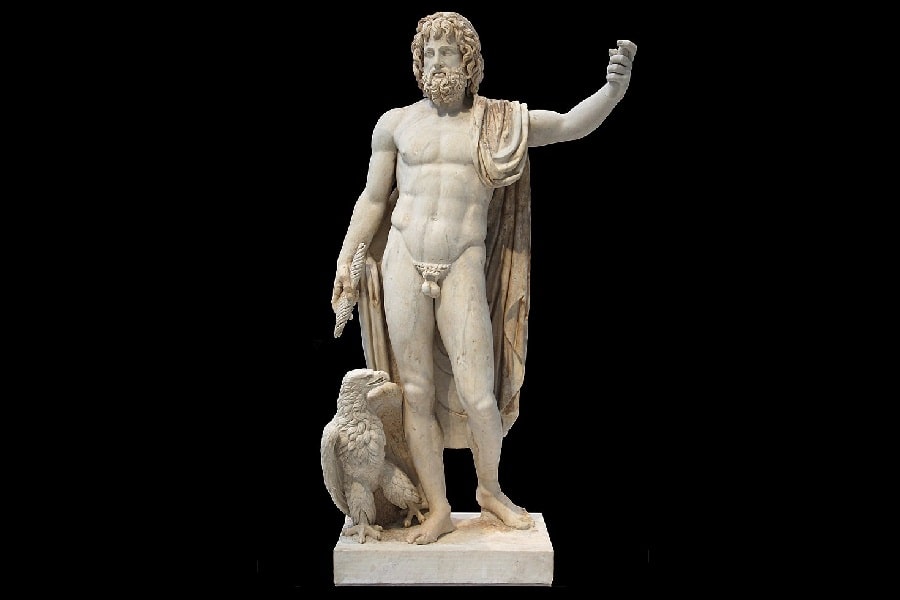
Jove, also known as Jupiter, was a prominent god in the Roman pantheon and was widely worshiped across ancient Italy. The Samnites likely adopted Jove as a significant deity in their religious practices. He was associated with the sky, thunder, and supreme divine power while representing authority, justice, and the well-being of the state.
Aesernia
Aesernia was a Samnite goddess associated with healing and fertility. She was often depicted as a seated female figure, holding a cornucopia – symbolizing abundance – and a snake that represented healing and rebirth.
She was almost certainly only worshiped on a local level since she was closely related to the ancient city of Aesernia, located in the modern region of central Italy, but the principal deity of the city also held a significant place in the religious beliefs and practices of the Samnites as a whole.
Angitia
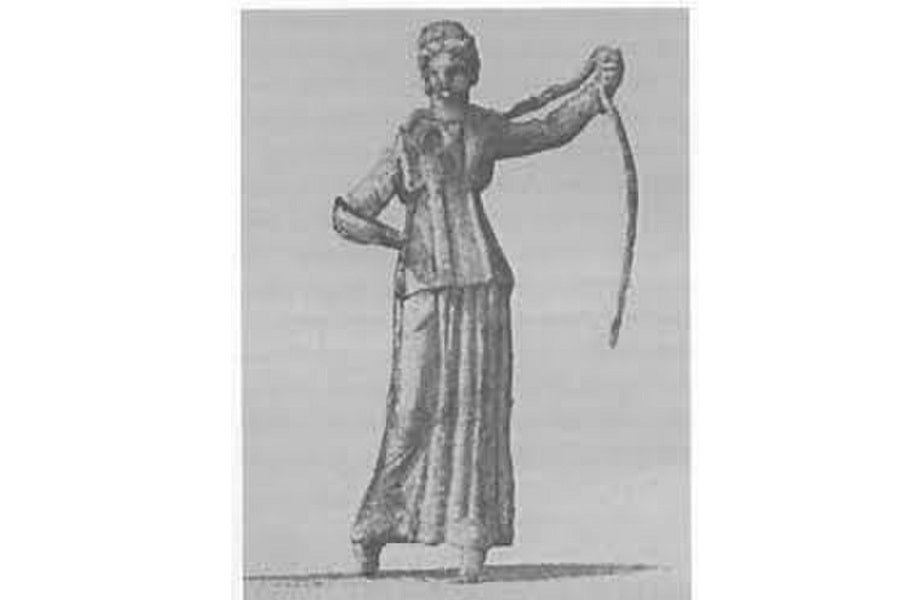
Angitia was a Samnite goddess associated with healing, magic, and serpents. She was often depicted with snakes and was believed to have the power to cure diseases and protect against venomous creatures. Angitia was particularly worshiped in the region of southern Samnium and held a prominent place in Samnite religious beliefs.
Angitia was revered as a powerful healer and a bringer of blessings. She possessed knowledge of medicinal herbs and was believed to have the ability to cure ailments and protect people from illness and venomous bites.
Ceres
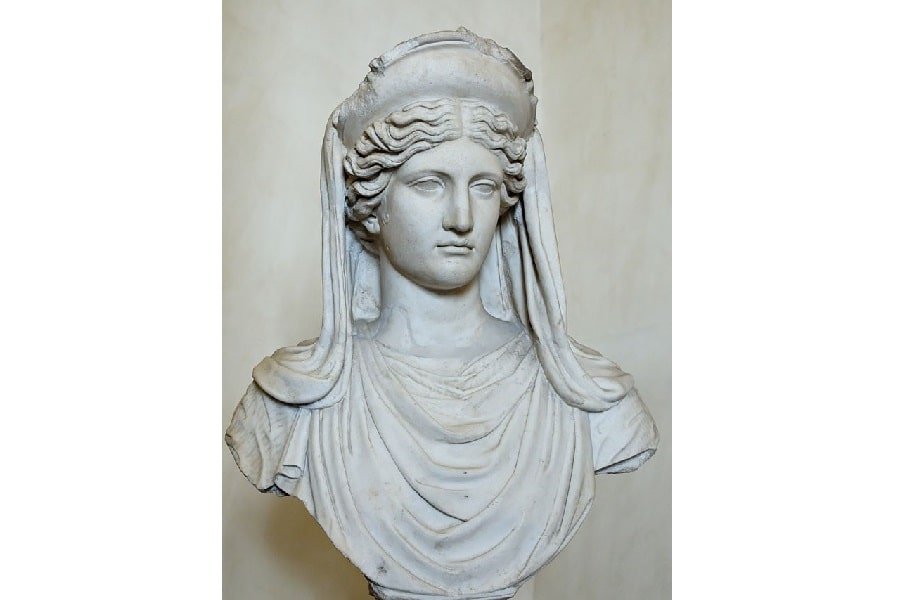
Ceres, known as Demeter in Greek mythology, was a goddess of agriculture and fertility. She was often depicted whilst holding stalks of grain or a torch. The Samnites, as an agrarian society, likely revered Ceres as a goddess since she was the one who gave them bountiful harvests and an abundance of crops.
Mars
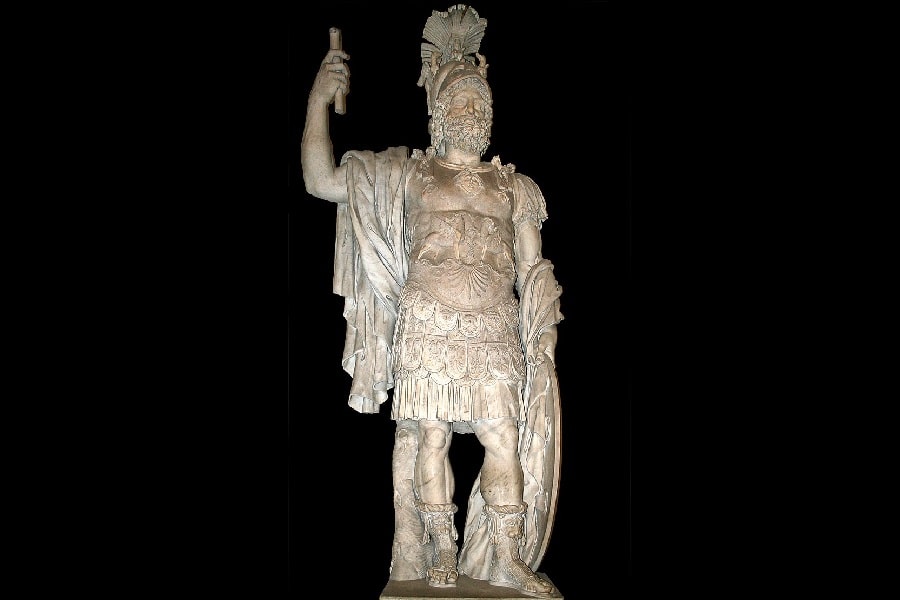
Mars was the Roman god of war and a significant deity in the ancient Roman pantheon. The Samnite forces were renowned for their fighting abilities and, therefore, they likely worshiped Mars as a guardian and provider of martial strength. Mars was associated with valor, military strategy, and victory in battle.
Apollo
Apollo was a Greek and Roman god associated with various aspects, including healing, music, prophecy, and the sun. The Samnites likely worshiped Apollo and revered his attributes, such as his role in healing and divination. Apollo’s influence may have been introduced to the Samnites through cultural exchanges with neighboring Greek colonies.
Diana

Diana, known as Artemis in Greek mythology, was the goddess of the hunt, wilderness, and childbirth. As the Samnites inhabited mountainous regions with abundant wildlife, Diana likely held significance as a deity as the protector of hunters, ensuring their successful hunts. She was also associated with female fertility and the cycle of life.
Do Samnites Still Exist?
Today, the Samnites do not exist anymore as a distinct cultural or ethnic group. Over time, the Samnites were assimilated into the broader Roman and Italian societies. The process of assimilation occurred through various factors, including Roman conquests, cultural exchanges, intermarriage, and the gradual development of a unified Roman identity.
The Roman expansion and dominance over the Italian peninsula resulted in the assimilation of various Indigenous peoples into the Roman Empire. As a result, distinct ethnic identities, such as that of the Samnites, gradually faded away.